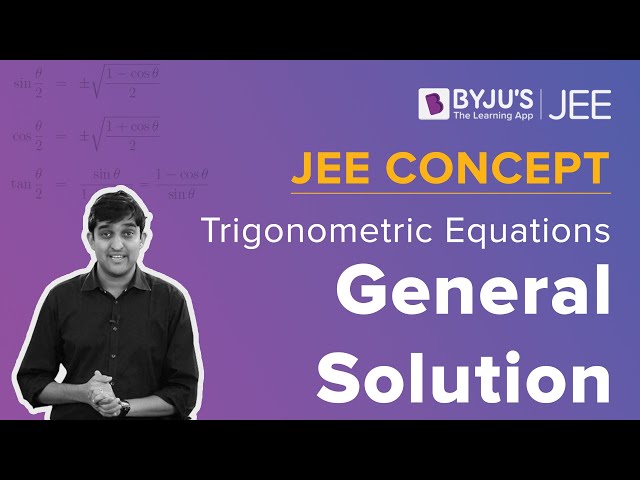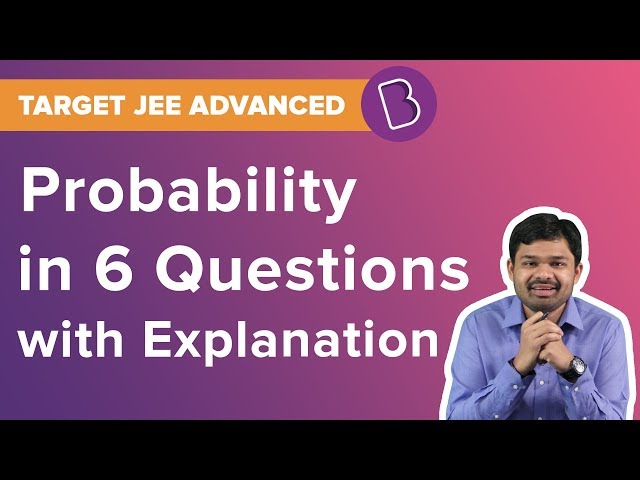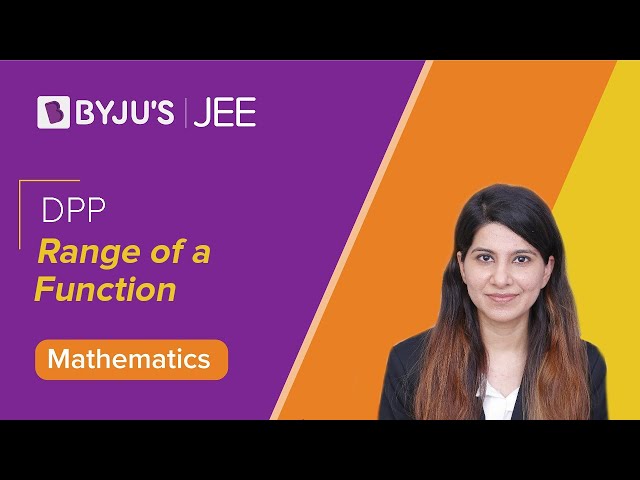Here students will get access to the complete set of questions from the Paper 1 Maths section of the JEE Advanced 2020 question paper. 18 questions were asked and a total of 66 marks were allocated for this section. There were MCQs, Numerical types question as well as paragraph based questions. The question paper provided here will help students get a better understanding of the question pattern, marking scheme and duration of the paper. Students can either view the paper directly or download it in a PDF format. They can use the question paper as a study guide and practice solving different problems. Detailed solutions are also provided to help the students find the right answer and study effectively for the entrance exam.
Paper 1 - Maths
Question 1. Suppose ?, ? denote the distinct real roots of the quadratic polynomial ?2 + 20? − 2020 and suppose ?, ? denote the distinct complex roots of the quadratic polynomial
x2 − 20? + 2020. Then the value of ?? (? − ?) + ?? (? − ?) + ?? (? − ?) + ?? (? − ?) is
- a) 0
- b) 8000
- c) 8080
- d) 16000
Solution:
Answer: d

Now
= ac (a – c) + ad (a – d) +bc (b – c) + bd (b – d)
= a2c - ac2 + a2d - ad2 +b2c – bc2+ b2d - bd2
= a2 (c +d) + b2 (c + d) – c2 (a + b) – d2 (a + b)
= (a2 + b2) (c + d) – (a + b) (c2 + d2)
= {(a+b)2 – 2ab} (c + d) – {(c + d)2 –2cd} (a + b)
Put value a, b, c and d then,
= {(-20)2 – 2(-2020)} (20) - {(20)2 – 2(2020)} (-20)}
= ((400 + 4040) (20) – (–20) ((20)2– 4040)
= 20[4440 – 3640]
20[800] = 16000
Question 2. If the function ?: R ⟶ R is defined by (?) = |?| (?– sin?), then which of the following statements is TRUE?
- a) ? is one-one, but NOT onto
- b) ? is onto, but NOT one-one
- c) ? is BOTH one-one and onto
- d) ? is NEITHER one-one NOR onto
Solution:
Answer: c
Given, f(x) = |x|(x – sinx)
f(–x) = –(|x|(x – sinx))
f(–x) = –f(x) ⇒ f(x) is odd, non-periodic and continuous function.
Now,

Question 3. Let the functions: R ⟶ R and g : R ⟶ R be defined by
- a) \((2-\sqrt{3})+\frac{1}{2}(e-e^{-1})\)
- b) \((2+\sqrt{3})+\frac{1}{2}(e-e^{-1})\)
- c) \((2-\sqrt{3})+\frac{1}{2}(e+e^{-1})\)
- d) \((2+\sqrt{3})+\frac{1}{2}(e+e^{-1})\)
Solution:
Answer: a


Question 4. Let ?, ? and λ be positive real numbers. Suppose P is an end point of the latus rectum of the parabola ?2 = 4λ?, and suppose the ellipse
- a) 1/√2
- b) 1/2
- c) 1/3
- d) 2/5
Solution:
Answer: a

P(λ, 2λ)
\(y^{2} = 4\lambda x \Rightarrow \left ( \frac{dy}{dx} \right )_{A} = 1 = m_{1}\)…….(1)Now E:
\(\frac{x^{2}}{a^{2}}+\frac{y^{2}}{b^{2}} = 1\)Passes through P\(\frac{\lambda ^{2}}{a^{2}}+\frac{4\lambda ^{2}}{b^{2}} = 1 \Rightarrow \left ( \frac{dy}{dx} \right )_{A} = \frac{-b^{2}}{2a^{2}} = m_{2}\)\(\frac{2\lambda }{2\lambda }X - \frac{\lambda }{a^{2}}\cdot \frac{b^{2}}{2\lambda } = -1\)…….(2)From eq. (1) and (2)
m1. m2 = -1 ⇒ b2 = 2a2
\(\frac{a^{2}}{b^{2}}=\frac{1}{2}\)for eccentricity of ellipse,
\(e = \sqrt{1 - \frac{a^{2}}{b^{2}}} = \sqrt{1 - \frac{1}{2}} = \frac{1}{\sqrt{2}}\)
Question 5. Let C1 and C2 be two biased coins such that the probabilities of getting head in a single toss are
- a) 40/81
- b) 20/81
- c) 1/2
- d) 1/4
Solution:
Answer: b

Now roots of equation x2– αx + β = 0 are real and equal
∴ D= 0
α2 – 4β = 0
α2 = 4β
⇒ (α = 0, β = 0) or (α = 2, β = 1)
\(P(E) = ^{2}C_{o}\left ( \frac{1}{3} \right )^{2}\cdot ^{2}C_{o}\left ( \frac{2}{3} \right )^{2} + ^{2}C_{2}\left ( \frac{2}{3} \right )^{2}\cdot ^{2}C_{1}\left ( \frac{1}{3} \right )\left ( \frac{2}{3} \right )\)⇒
\(\frac{1}{9}\times\frac{4}{9}+\frac{4}{9}\times\frac{4}{9}=\frac{20}{81}\)
Question 6. Consider all rectangles lying in the region
- a) \(\frac{3\pi }{2}\)
- b) ?
- c) \(\frac{\pi }{2\sqrt{3}}\)
- d) \(\frac{\pi\sqrt{3} }{2}\)
Solution:
Answer: c

Let sides of rectangle are a & b
Then, perimeter = 2a + 2b
p = 2(a + b)
Now, b = 2sin2x and b = 2sin(2x + 2a) ⇒ 2x + 2x + 2a = ?
\(\left \{ x = \frac{\pi }{4}-\frac{a}{2}\right \}\)For perimeter maximum
P = 2a + 2b
P = ? – 4x + 4sin2x
\(\frac{dp}{dx} = -4+8cos2x = 8\left \{cos2x-\frac{1}{2} \right \}\)
Question 7. Let the function ?: R → R be defined by (?) = ?3 − ?2 + (? − 1) sin ? and let ?: R → R be an arbitrary function. Let ?g : R → R be the product function defined by (??)(?) = ?(?)?(?). Then which of the following statements is/are TRUE?
- a) If g is continuous at ? = 1, then ?? is differentiable at ? = 1
- b) If ?? is differentiable at ? = 1, then g is continuous at ? = 1
- c) If g is differentiable at ? = 1, then ?? is differentiable at ? = 1
- d) If ?? is differentiable at ? = 1, then g is differentiable at ? = 1
Solution:
Answer: a, c
f : R → R
a) f(x) = x3– x2+ (x – 1) sinx ; g : R → R
h(x) = f(x). g(x) = {x3 – x2+ (x – 1)sinx}. g(x)

as g(x) is constant at x =1
∴ g(1+h) = g(1 – h) = g(1)
h'(1+) = h'(1-) = (1 + sin1) g(1)
'a' is correct.
Question 8. Let M be a 3 × 3 invertible matrix with real entries and let I denote the 3 × 3 identity matrix. If ?−1 = adj (adj ?), then which of the following statements is/are ALWAYS TRUE?
- a) ? = ?
- b) det ? = 1
- c) ?2 = ?
- d) (adj ?)2 = ?
Solution:
Answer: b, c, d
M–1 = adj(adj(M))
(adj M)M–1 = (adjM)(adj(adj(M)))
(adj M)M–1 = N. adj(N) { Let adj(M) = N }
(adj M)M–1 = |N|I
(adjM)M–1 = |adj(M)|I3
(adjM) = |M|2 .M ............(1)
|adj M| = ||M|2.M|
|M|2 = |M6|.|M|
|M|=1, |M| ≠ 0
From equation (1)
adj.M =M ............(2)
Multiply by matrix M
M.adj M = M2
|M|I3 = M2
M2 = I
From (2) adj M =M
(adj M)2 = M2 = I
Question 9. Let S be the set of all complex numbers z satisfying |?2 + ? + 1| = 1. Then which of the following statements is/are TRUE?

Solution:
Answer: b, c

Question 10. Let x, ? and z be positive real numbers. Suppose ?, ? and z are the lengths of the sides of a triangle opposite to its angles ?, ? and Z, respectively. If
- a) 2? = ? + ?
- b) Y = ? + ?
- c) \(tan\frac{X}{2} =\frac{x}{y+z}\)
- d) ?2 + ?2 − ?2 = ??
Solution:
Answer: b, c

∆2 = (S - x)2(S - z)2
S(S–y) = (S–x) (S–z)
(x + y + z) (x + z – y) = (y + z – x) (x + y –z)
(x + z)2 – y2 = y2 - (z – x)2
(x + z)2 + (x – z)2 = 2y2
x 2 + z2 = y2

Question 11. Let ?1 and ?2 be the following straight lines.
Suppose the straight line is
Lies in the plane containing ?1 and ?2, and passes through the point of intersection of ?1 and
?2. If the line L bisects the acute angle between the lines ?1 and ?2, then which of the following statements is/are TRUE?
- a) ? − ? = 3
- b) l + ? = 2
- c) ? − ? = 1
- d) ? + ? = 0
Solution:
Answer: a, b
Solution:


Question 12. Which of the following inequalities is/are TRUE?
- a)\(\int_{0}^{1}xcosx\: dx\geq \frac{3}{8}\)
- b) \(\int_{0}^{1}xsinx\: dx\geq \frac{3}{10}\)
- c) \(\int_{0}^{1}x^{2}cosx\: dx\geq \frac{1}{2}\)
- d) \(\int_{0}^{1}x^{2}sinx\: dx\geq \frac{2}{9}\)
Solution:
Answer: a, b, d



Question 13. Let m be the minimum possible value of
Solution:
Answer: 8.00
Using AM ≥ GM
\(\frac{3^{y_{1}} + 3^{y_{2}} + 3^{y_{3}}}{3}\geq (3^{y_{1}}\cdot 3^{y_{2}}\cdot 3^{y_{3}})^{\frac{1}{3}}\)\({3^{y_{1}} + 3^{y_{2}} + 3^{y_{3}}}\geq 3\cdot (3^{y_{1}+y_{2}+y_{3}})^{\frac{1}{3}}\){∴ y1+ y2 + y3=9}\({3^{y_{1}} + 3^{y_{2}} + 3^{y_{3}}}\geq 3\cdot (3^{9})^{\frac{1}{3}}\)\({3^{y_{1}} + 3^{y_{2}} + 3^{y_{3}}}\geq 81\)m = log381 = log334 = 4log33 = 4
Again, using A.M ≥ G.M
\(\frac{x_{1}+x_{2}+x_{3}}{3}\geq (x_{1}\cdot x_{2}\cdot x_{3})^{\frac{1}{3}}\)=
\(\frac{9}{3}\geq (x_{1}\cdot x_{2}\cdot x_{3})^{\frac{1}{3}}\){ ∵ x1+x2+x3 = 9}⇒27 ≥ x1x2x3
M = log3?1+ log3?2+ log3?3
M = log3(x1x2x3) = log3(27) =3
∴ log2(m)3 + log3(M)2 ⇒ log2(26) + log3(32) = 6 + 2 = 8
Question 14. Let ?1, ?2, ?3,… be a sequence of positive integers in arithmetic progression with common difference 2. Also, let ?1, b2, ?3,… be a sequence of positive integers in geometric progression with common ratio 2. If a1 = ?1 = ?, then the number of all possible values of c, for which the equality 2(?1 + ?2 + ⋯ + ??) = ?1 + ?2 + ⋯ + ?? holds for some positive integer n, is _____
Solution:
Answer: 1.00
2(a1+a2 +......+ an) = b1 + b2 + ... + bn
\(2\left [ \frac{n}{2}(2a_{1} +(n-1)2) \right ] = \frac{b_{1}(2^{n}-1)}{2-1}\)⇒ 2n[a1 + (n – 1)] = b1(2n – 1)
⇒ 2na1+ 2n2 – 2n = a1(2n – 1) {∵ a1 = b1}
⇒ 2n2 – 2n = a1(2 – 1=2n)
\(a_{1} = \frac{2(n^{2}-n)}{2^{n}-1-2n} = c\){∵ a1 = c}∵ c ≥ 1
\(\Rightarrow \frac{2(n^{2}-n)}{2^{n}-1-2n}\geq 1\)2(n2– n) ≥ 2n– 1 – 2n {∵ n2– n ≥ 0 for n ≥ 1}
= 2n2+ 1 ≥ 2n
Therefore, n =1, 2,3,4,5,6
n = 1 ⇒ c= 0 (rejected)
n = 2 ⇒ c < 0 (rejected)
n = 3 ⇒ c = 12 (correct)
n = 4 ⇒ c = not Integer
n = 5 ⇒ c = not Integer
n = 6 ⇒ c = not Integer
∵ c = 12 for n = 3
Hence, no. of such c = 1
Question 15. Let f: [0, 2] ⟶ R be the function defined by
If ?, ? ∈ [0,2] are such that {? ∈ [0, 2] ∶ f(?) ≥ 0} = [?, ?], then the value of ? − ? is _____
Solution:
Answer: 1.00
\(f(x) = (3-sin(2\pi x))sin\left (\pi x-\frac{\pi }{4} \right) - sin\left ( 3\pi x +\frac{\pi }{4} \right )\)
Question 16. In a triangle PQR, let
Then the value of is _____
Solution:
Answer: 108.00

Question 17. For a polynomial g(?) with real coefficients, let ?? denote the number of distinct real roots of g(?). Suppose S is the set of polynomials with real coefficients defined by S = {(x2 – 1)2(a0 + a1x + a2x2 + a3x3) : a0, a1, a2, a3∈R}
For a polynomial ?, let ?'and ?'' denote its first and second order derivatives, respectively.
Then the minimum possible value of (??' + ??''), where ? ∈ ?, is _____
Solution:
Answer: 5.00
f(x) = (x2 – 1)2h(x); h(x) = a0 +a1x +a2x2+ a3x3
Now, f(1) = f(–1) = 0
⇒ f'(α) = 0, α∈ (–1,1) [Rolle's Theorem]
Also, f'(1) = f'(–1) = 0 ⇒ f'(x) = 0 has at least 3 root –1, α,1 with –1 <α< 1
⇒ f"(x) = 0 will have at least 2 roots, say β, γ such that
–1 < β < α < γ < 1 [Rolle's Theorem]
So, min= 2
and we find (mf' + mf") = 5 for f(x) =(x2 – 1)2
Thus, Ans = 5
Question 18. Let e denote the base of the natural logarithm. The value of the real number a for which the right-hand limit is equal to a nonzero real number, is _____
Solution:
Answer: 1.00


























